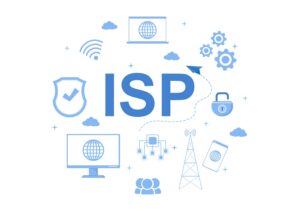A Complete Guide to Getting Internet for Your Apartment

Safeguarding your data is as important as finding a safe neighborhood to live in. The closer you are to neighbors, the higher the chance of having your data compromised.
Your apartment should be the ultimate safe space for you and your data.
Step 1: Determine Your Internet Needs
Before choosing a provider, assess your usage:
Basic use (email, browsing): 25-50 Mbps
Streaming HD video: 50-100 Mbps
4K streaming/gaming: 100-200 Mbps
Multiple devices/heavy use: 200+ Mbps
Work from home: Consider upload speeds (50+ Mbps recommended for video calls)
Step 2: Research Available Providers
Check which providers service your apartment:
Ask your landlord/property management
Check provider websites with your address
Use comparison tools like BroadbandNow or HighSpeedInternet.com
Ask neighbors about their service
Common options include:
Cable internet (Xfinity, Spectrum)
Fiber optic (Google Fiber, Verizon Fios, AT&T Fiber)
DSL (AT&T, CenturyLink)
Fixed wireless (T-Mobile Home Internet, Verizon 5G Home)
Satellite (Starlink, HughesNet, Viasat)
Step 3: Compare Plans and Pricing
When evaluating plans consider:
Monthly cost (watch for promotional rates that increase after 12-24 months)
Equipment fees (modem/router rental vs. buying your own)
Data caps (some providers limit monthly usage)
Contract requirements
Installation fees
Bundling options (TV/phone)
Step 4: Check Apartment-Specific Considerations
Building restrictions: Some apartments have exclusive deals with certain providers
Existing wiring: Ask if previous tenants had service installed
Shared walls: WiFi interference may require a better router
Installation rules: Some landlords require professional installation
Step 5: Order Your Service
Once you’ve chosen a provider:
Schedule installation (or request a self-install kit)
Choose your start date (align with move-in if possible)
Confirm if you need to be present for installation
Ask about any required equipment
Step 6: Set Up Your Equipment
For optimal performance:
Place your router centrally in your apartment
Keep it elevated and away from obstructions
Avoid interference from microwaves, cordless phones
Consider a mesh system for larger apartments
Secure your WiFi with a strong password
Step 7: Troubleshoot Common Issues
If you experience problems:
Restart your modem/router
Check for outages with your provider
Test speeds with Speedtest.net
Contact customer support for persistent issues
Alternative Options
If traditional ISPs don’t meet your needs:
Mobile hotspots (from your phone or dedicated device)
Public WiFi (with a VPN for security)
Community networks (some cities offer municipal broadband)
Money-Saving Tips
Bundle with roommates to split costs
Negotiate with providers (ask for retention deals)
Buy your own modem/router to avoid rental fees
Look for low-income programs like the Affordable Connectivity Program
The Bottom Line
With more people working from home, having reliable and fast internet service has become a necessity. With a little research and comparison shopping, you can score the internet speed you need for an affordable price.






